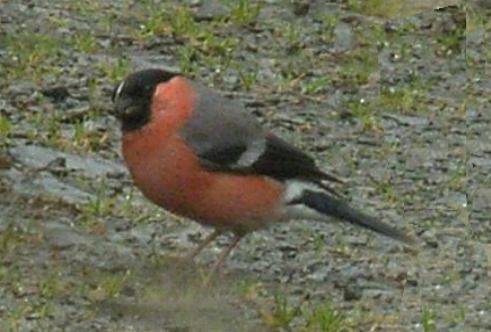Bullfinch
Scientific name: Pyrrhula pyrrhula

Bullfinches are most definitely the gardener's enemy due to their destructive feeding behaviour. From January to April when other food is scarce they raid orchards to strip fruit trees of their fruit buds. Their short, rounded bill with sharp cutting edges is perfectly suited to the task. A single bird has been observed consuming buds at a rate of 30 per minute on a plum tree. They will also take the leaf buds as well, causing die-back of branches and even the death of whole trees - I have lost two plum trees in this way.
They do not have an impressive song which they learn from their parents. This can be exploited with captive birds which can learn up to three songs and can sound more nuanced than the original human effort. In the nineteenth century German foresters in the Black Forest would take small birds and whistle folk songs which the birds would adopt. They were very popular and were exported around the world with those singing three tunes fetching good money. Prince Albert the husband of Queen Victoria had one also the Russian Tsar.
Both sexes have similar colouring, but the female has a duller pink breast. It is thought that they may pair for life as they stay together during the winter when most small birds split up.
Between April and July the female builds a nest of moss, twigs and lichen, usually in woodland, but it can be in a hedge or a clump of brambles. She lays 4 or 5 green-blue eggs with brownish spots, which she incubates for 12 to 14 days. The hatchlings are fed caterpillars by both parents and after about 14 days they leave the nest. There are usually two broods in a season.
Back to GARDEN CREATURES